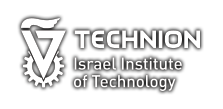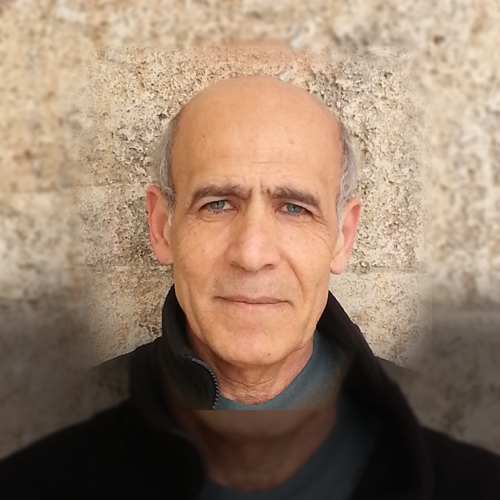for CV file: CV-R. Chaim
- B.Sc. 1979 (Ben-Gurion Univ.)
- M.Sc. 1981 (Ben-Gurion Univ.)
- D.Sc. 1984 (Technion)
After receiving his doctorate in Materials Engineering, Dr. Chaim spent two years as a postdoctoral research associate in the Department of Materials Science and Engineering, Case Western Reserve University, Ohio. In 1987 he joined the Department of Materials Science & Engineering at Technion. During 1995-96 he was on sabbatical leave at Lehigh University, Pennsylvania and during 2001-02 at Lawrence Berkeley National Lab, California. He is a member of the American Ceramic Society, The Materials Research Society and the Israel Society for Microscopy.
Research topics: Nanocrystalline ceramics: Transparent and fully-dense nanocrystalline ceramics, their property – microstructure relationships, Stability and phase transitions, Effects of surfaces and interfaces on ceramic properties, spark plasma sintering (SPS) and the related densification mechanisms.
Nanocrystalline Ceramics
Our research deals with different experimental and theoretical aspects of the Nanocrystalline Ceramics:
- Sintering and Densification of Nanocrystalline and Optical Ceramics:
In order to preserve the nanostructure character during sintering and densification of nanocrystalline ceramic powders, we continue to investigate the effects of alloying elements as well as second phase particles on sintering and grain growth inhibition in nanocrystalline ceramics. In this respect, spark plasma sintering (SPS) was used in collaboration with our Swedish (Stockholm Univ.), French (CIRIMAT, Toulouse) and Israeli (BGU, Beer-Sheva) colleagues to successfully fabricate, transparent as well as fully-dense model nanocrystalline ceramic oxides (MgO, YAG, Y2O3, NiO). The densification mechanisms during the SPS are currently under investigation. - Morphological and Structural Stability of Nanostructured Phases:
Miniaturization of the technological systems and devices necessitates investigation of the morphological and structural stability of the nanostructured phases with respect to their size, curvature, surface and interfacial energies. These aspects are currently under investigation for the glass/ceramic systems. - High Temperature Plastic Deformation:
An important aspect of the nanocrystalline ceramic powders is their excellent sinterability at relatively low temperatures. The nanometric grain size and the improved diffusivity through the grain boundaries make this ceramics suitable for superplastic deformation. These aspects are under investigation in collaboration with colleagues from Spain (Sevilla Univ.). - Modeling of the Physical and Mechanical Properties and Behavior of Nanocrystalline ceramics:
In order to evaluate the physical and mechanical behavior of these new materials, it is necessary to build physical models which can describe and predict these aspects. Percolative composite model (PCM) was developed for prediction of the changes in the transport-type properties versus grain size. The PCM model determined a criterion for classification of the materials to exhibit the nanocrystalline behavior. Plastic deformation in impure nanocrystalline ceramics was modeled using the PCM model in conjunction with existing models for grain boundary viscous flow. The last model led to determination of the threshold strain rate in impure nanocrystalline ceramics.
- R. Chaim, Viewpoint article “Insights into photoemission origins of flash sintering of ceramics”, Scripta Mater. 196 113749 (2021).
- R. Chaim, “Reactive flash sintering (RFS) in oxide systems: kinetics and thermodynamics”, J. Mater. Sci. 56 278 (2021).
- R. Chaim, “Electric field – flash temperature relationship in liquid-film assisted flash sintering of ceramic nanoparticles”, Scripta Mater. 187 4 (2020).
- R. Chaim, “Effect of the liquid fragility on flash sintering behavior of oxide nanoparticles”, Scripta Mater. 178 261 (2020).
- R. Chaim, Y. Amouyal, “Liquid-film assisted mechanism of reactive flash sintering in oxide systems”, Materials, 12 1494 (2019).
- R. Chaim, “Relation between flash onset-, Debye-, and glass transition temperature in flash sintering of oxide nanoparticles”, Scripta Mater. 169 6 (2019).R. Chaim, C. Estournès, “Effects of the fundamental oxide properties on the electric field – flash temperature during flash sintering”, Scripta Mater. 163 130 (2019).
- R. Chaim, “On the kinetics of solid-assisted densification during flash sintering of ceramic nanoparticles”, Scripta Mater. 158 88 (2019).
- R. Chaim, C. Estournès, “On thermal runaway and local endothermic/exothermic reactions during flash sintering of ceramic nanoparticles”, J. Mater. Sci. 53 6378 (2018).
- R. Chaim, G. Chevallier, A. Weibel, C. Estournès, “Grain growth during spark plasma and flash sintering of ceramic nanoparticles: a review”, J. Mater. Sci. 53 3087 (2018).
- R. Chaim, G. Chevallier, A. Weibel, C. Estournès, “Flash sintering of dielectric nanoparticles as a percolation phenomenon through a softened film”, J. Appl. Phys. 121 145103 (2017).
- R. Chaim, “Particle surface softening as universal behaviour during flash sintering of oxide nano-powders. materials 10 179 (2017).
- R. Chaim, “Liquid film capillary mechanism for densification of ceramic powders during flash sintering. materials 9 280 (2016).
- R. Chaim, “On densification mechanisms of ceramic particles during spark plasma sintering”, Scripta Mater. 115 84 (2016).
- R. Marder, C. Estournès, G. Chevallier, R. Chaim, “Numerical model for sparking and plasma formation during spark plasma sintering of ceramic compacts”, J. Mater. Sci. 50 4636 (2015).
- R. Marder, C. Estournès, G. Chevallier, R. Chaim, “Spark and plasma in spark plasma sintering of rigid ceramic nanoparticles: A model system of YAG”, J. Eur. Ceram. Soc. 35 211 (2014).
- R. Marder, C. Estournès, G. Chevallier, R. Chaim, “Plasma in spark plasma sintering of ceramic particle compacts”, Scripta Mater. 82 57 (2014).
- R. Chaim, “Electric field effects during spark plasma sintering of ceramic nanoparticles”, J. Mater. Sci. 48 502 (2013).
- R. Chaim, R. Marder, C. Estournès, Z. Shen, “Densification and preservation of the ceramic nanocrystalline character by spark plasma sintering”, Adv. Appl. Ceram. 111 280 (2012).
- A. Gallardo-Lopez, A. Dominguez-Rodriguez, C. Estournès, R. Marder, R. Chaim, “Plastic deformation of dense nanocrystalline Y2O3 at elevated temperatures, J. Eur. Ceram. Soc. 32 3115 (2012).
- R. Chaim, “Grain coalescence by grain rotation in nano-ceramics”, Scripta Mater. 66 269 (2012).
- R. Chaim, R. Marder, C. Estournès, “Optical transparent ceramics by spark plasma sintering of oxide nanoparticles”, Scripta Mater. 63 211 (2010).
- R. Marder, R. Chaim, C. Estournès, “Grain growth stagnation in fully dense nanocrystalline Y2O3 by spark plasma sintering”, Mater. Sci. Eng. A 527 1577 (2010).
- R. Chaim, O. Reinharz Bar-Hama, “Densification of nanocrystalline NiO ceramics by spark plasma sintering”, Mater. Sci. Eng. A 527 462 (2010).
- R. Chaim, “Activation energy and grain growth in nanocrystalline Y-TZP ceramics”, Mater. Sci. Eng. A 486 439 (2008).
- A. Dominguez-Rodriguez, D. Gomez-Garcia, E. Zapata-Solvas, J. Z. Shen, R. Chaim, “Making Ceramics Ductile at Low Homologous Temperatures”, Scripta Mater. 56 89 (2007).
- R. Chaim, “Densification mechanisms in spark plasma sintering of nanocrystalline ceramics”, Mater. Sci. Eng. A 443 25 (2006).
- R. Chaim, R. Marder-Jaeckel, J. Z. Shen, “Transparent YAG ceramics by surface softening of nanoparticles in spark plasma sintering”, Mater. Sci. Eng. A 429 74 (2006).
- R. Chaim, Z. Shen, M. Nygren, “Transparent nanocrystalline MgO by rapid and low-temperature spark plasma sintering”, J. Mater. Res. 19 2527-2531 (2004).
- R. Chaim, “Plastic deformation in impure nanocrystalline ceramics”, J. Mater. Res. 14 2508-2517 (1999).
- R. Chaim, “Percolative Composite Model for Prediction of the Properties of Nanocrystalline Materials”, J. Mater. Res. 12 1828-36 (1997).



